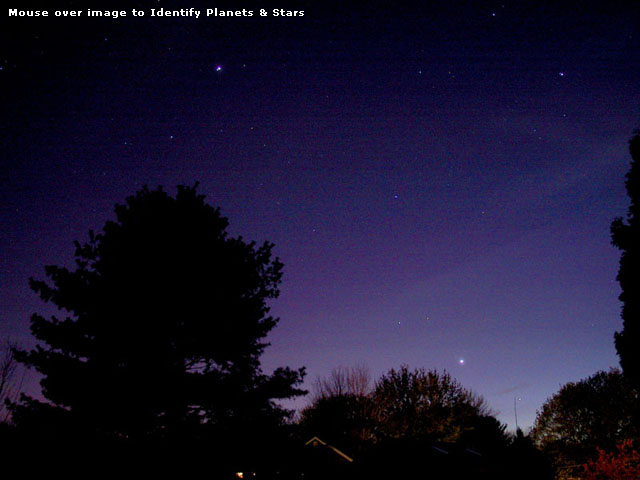YOUR MISSION: BE A SKY OBSERVER!
Some people think the first thing you need to be an astronomer is a telescope. But, if you've even glanced at the earlier articles in this spot, you will know that there are better starting points for a journey into space ... things like visiting your local Astronomy Club, reading Astronomy books, and using star charts and binoculars.
But the most important beginning of all is simply becoming a "Sky Observer". You can start on the very next evening with no equipment at all! Go out a half-hour to an hour after sunset and look around. Is it cloudy or clear? Are the clouds moving or breaking up, or is there a featureless overcast. Look towards the glow left low on the horizon by the recently visible Sun. You are facing West in the Spring or Fall, Southwest in the Winter, Northwest in the Summer. Is there wind? If is is it blowing in your face then it is a West Wind (or Southwest, or Northwest Wind). These winds sometimes "blow away" the cloud by the time it is really dark.
Can you see any stars coming out? Where are you looking to see the first stars? Is the Moon up? What direction are you facing to see it, and what is its shape? Are the stars twinkling or steady? Are any stars NOT twinkling?
As it gets darker do any of the stars you see seem to be arranged in patterns or shapes? Can you recognize any of these shapes on your star chart? Face North. Can you find the Big Dipper or the "W"-shaped constellation of Cassiopeia? If not try to make a "snap-shot" memory of any group of stars you see in the North. As the months go by look for this group once or twice a month. You will see it slowly "rotate" and make a giant circle in the Northern Sky as the year progresses.
If you get outside regularly and look up, carefully noticing all that you can see, you are a Sky Observer! You are well on your way to being a true Astronomer.
David Levy, co-discoverer of many comets, including the one that crashed into Jupiter in 1994 (Shoemaker-Levy 9), has spent thousands of hours scanning the Sky for comets. He once said that the greatest observing experience is to simply go out with eyes prepared to take in whatever the Universe is ready to show him on that night. This is the "Observer's Attitude" at its best!
If you are a Sky Observer and someone says to you "I saw a UFO last night", you might say "was it a dazzling silvery-white light above the southwestern horizon?". If your UFO fan says "Yes!", then your sky-observing skills have let you "identify" the object as the Planet Venus! Sky Observers are rewarded by familiarity with the great variety of events that happen in the Sky: bright planets, line-ups of planets, meteors and fireballs, comets, northern lights, and eclipses among other things. Don't miss out on any of this starting NOW!
You will see and understand more when you add some "Sky Orientation" skills to your observer's attitude. Learn how to find North, East, South, and West at night, as well as the "meridian". The meridian is an imaginary arch that passes straight overhead, joining the North Star (Polaris) to the North and South directions. When stars appear near the meridian they are as high as they will get in your sky. As the weeks go by notice the stars in the East getting higher and those in the West getting lower before finally setting until next year.
Another good idea is to read about sky objects and events to look for in Astronomy Publications, such as those mentioned in the companion article in this series, "Learn the Sky".
When you get your own telescope, you will already have great experiences and skills as a Sky Observer, and the scope will extend your powers of observation into deeper realms of Space!

Return to the Beginners Page

